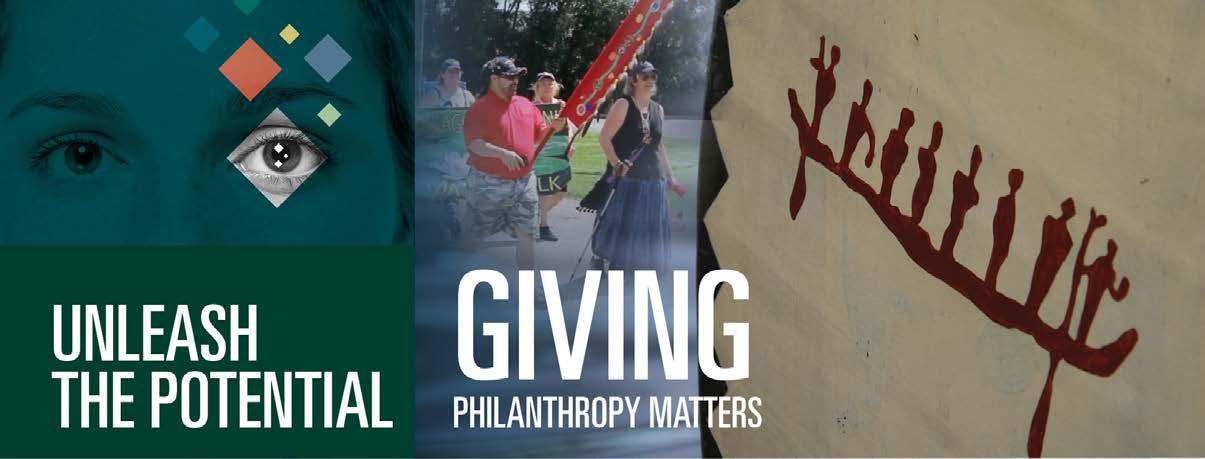
12 minute read
Giving: Philanthropy Matters
CELEBRATING PHILANTHROPIC SUPPORT OF INDIGENEOUS STUDENTS & PROGRAMS
Inset: Barbara Wall (Moktthewenkwe, Waawaashkesh Odoodem), is a member of the Deer clan.
William B. Reid Scholarship Honours Indigeneity and Indigenous Knowledge
Donors provide perpetual support of Trent’s Indigenous students and programs through the following endowments:
Aditya Jha Indigenous Studies Award Aditya Jha Indigenous Studies Bursaries Catherine Chiu Indigenous Bachelor of
Education Award Dr. Laura Weintraub Award Five Sisters Ph.D. Awards Gilbert Monture/Native Studies Fund John Bernard Scholarship Jon and Shelagh Grant Prize for Inuit
Students Malcolm Montgomery Memorial Bursary Malcolm Montgomery Indigenous
Studies Fund Morton Graduate Scholarship in
Indigenous Studies Norma & Lloyd Parnall Bursary Patricia & David Morton Indigenous
Studies Undergraduate Award Quaker Oats of Canada Graduate
Scholarship in Indigenous Studies William B. Reid Graduate Scholarship
Thank you to our generous supporters.
Help support Indigenous students and programs today by contacting Donna Doherty at 1-855-698-7368 ext. 7208 or Lorelei Wilkinson at 1-855-698-7368 ext. 6025. CARVING A PATH: In 1999 Trent University launched Canada’s first Indigenous Studies Ph.D. Program, inspiring people like Barbara L. Wall to join this extraordinary community of scholars that continue to make a difference in our world. Ms Wall’s research, It Flows from the Heart: Bodwewaadmiikwewag Nibi Waawiindmowin, focuses on the restoration of Anishinaabe women’s water knowledge and practices within the relocated Bodwewaadmii (Potawatomi) communities in Ontario, Wisconsin, Michigan, Kansas, and Oklahoma. With the support of the William B. Reid Scholarship, Ms. Wall has been able to travel to the communities essential to her research and significant in the advancement of Indigenous studies. “Being present in the community is an important aspect of the Anishinaabeg research methodology, it builds and enriches relationships. These reciprocal relationships are the foundation of knowledge sharing, or ‘data collection’ which is a large component of my research. Last year I met with Elders and Knowledge Holders where I spent time on the land, and participated in waterrelated practices and ceremonies. I also participated in the Pokagon Potawatomi Community’s water walk where I worked with the community to raise awareness of the need for water protection, conservation, and caretaking. Both times, I was able to build relationships and make great strides forward in my research,” explained Barbara Wall. “G’chi miigwech. A big thank you to William B. Reid,” says Ms Wall. “The use and development of new and culturally-based research methodologies are something the Trent Indigenous Studies Ph.D. program is known for and puts the department on the cutting edge of our discipline. It is my intention to combine my academic background in civil engineering with traditional ecological knowledge of water to create collaborative solutions to First Nations’ water issues, and protect this valuable resource.” Ms. Wall plans to defend her Ph.D. dissertation in the summer of 2017 and hopes to secure a position with Trent’s Indigenous Studies program. In the words of Prof. Shirley Williams, elder and professor emeritus, “My mother used to say, ’What are you going to tell the Creator when you leave this world about what you have done for your community?’” Please join us to help unleash a Trent student’s potential and make their research become a reality. trentu.ca/give
PHILANTHROPY MATTERS RESEARCH
THAT HAS IMPACT
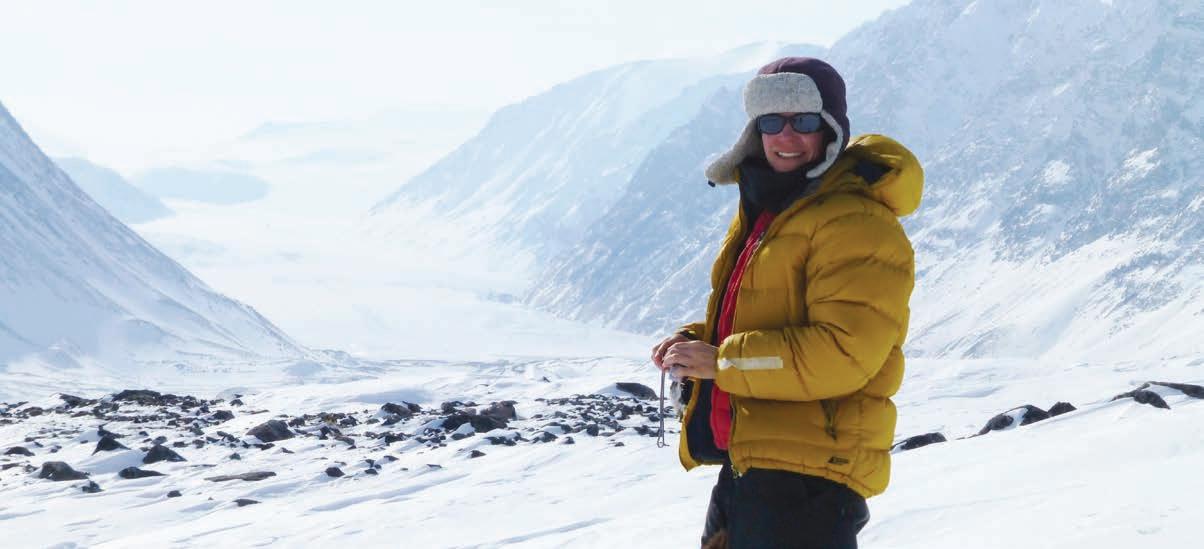
#1 IN CANADA FOR SCHOLARSHIPS & BURSARIES
Maclean’s Magazine University Rankings, primarily undergraduate category
A letter from Deborah (Debbie) Jenkins ’00
Trent University Ph.D. Candidate, Environmental and Life Sciences
For seven years I lived and worked in the Arctic. A remote and majestic place of rugged landscapes and seemingly endless sea ice. It inspired a strong connection to the north, and the people and wildlife that are so deeply entwined.
But the fabric of the north is quickly unravelling. Wildlife is declining … the climate on a path of unparalleled warming.
My Ph.D. research at Trent University is aimed squarely at both these issues. I am studying two legendary creatures of Canada’s north —caribou and muskoxen—focusing on their ecology and the influence of climate change.
The Arctic is truly a crucible of change. It is warming at twice the rate of the rest of the world and the sea ice is thinning and retreating.
Critical to Arctic conservation, sea ice acts as a platform for wildlife to breed, raise their young, to hunt, and to rest. For caribou and muskoxen, it is a bridge between islands, allowing movement to calving grounds, food, and escape from severe weather. The loss of sea ice could impede these movements and initiate a cascade of unprecedented effects.
For my Ph.D. I have reached into a technical toolbox, using some of the most innovative tools at our disposal—satellite telemetry, remote sensing, genetics, habitat and species distribution models, and climate models—to better understand the ecology of these species and their future in this changing environment.
It is the support of many agencies and sponsors that allows me to use these powerful tools and to realize my research goals. The list is big! It includes: • the National Sciences and Engineering
Research Council Scholarship; • the Queen Elizabeth II Graduate
Scholarship in Science and Technology; • the Edwin William and Irene Elizabeth
Curtin Scholarship; • the French American Charitable Trust; • the Symons Trust Fund for Canadian
Studies; • Dean’s Ph.D. Scholarships; and • the Northern Scientific Training
Program.
In combination, they have allowed me to travel north for field work, to analyze the hundreds of samples I use for genetic and dietary analysis, to participate in multiple courses here and abroad, and to advance my research, my collaborations and my knowledge.
As a northern scientist, I am intent on making a difference. Thank you for helping me do that. Sincerely, Debbie

Bata Revitalization UNLEASH THE LIBRARY OF THE FUTURE
The academic heart of Trent University, the iconic Bata Library, is set to undergo an amazing revitalization and transformation starting this spring. Every part of Trent University depends on the library: it’s a place of discovery, offering the extraordinary riches of past learning, where students and faculty collaborate to create new knowledge for the scholars of the future. Please help revitalize the heart of Trent University today at trentu.ca/give
PHILANTHROPY MATTERS
“I needed to do something,” Louise Parkes answered when asked about the creation of the Louise & Larry Parkes Indigenous Graduate Studies Bursary. “My mother, my brother Larry, a lifelong commitment to social justice, and my education at Trent University influenced this personal act of reconciliation.”
Ms. Parkes and her brother Larry Parkes ’74 were brought up by a strong mother who was widowed when they were very young. From an early age, the Parkes siblings remember their mother describing Canada as a three-legged stool with British Isles, French, and Indigenous legs—all needed for balance. She placed a particular emphasis on respect for all of the Indigenous peoples of Canada, explaining that their knowledge, history, and diverse cultures must be known and celebrated.
Their mother’s wisdom and teachings continue to have an impact today. Mr. Parkes, a Trent University Indigenous Studies and History graduate, worked as a high school history and economics teacher in Toronto for 35 years. In 1988 he had the opportunity to introduce and teach Native Studies at the grade 13 level at Cedarbrae C.I. in Scarborough. This popular course offered students a unique opportunity to learn about the history and cultures of the Indigenous peoples of Canada, and also Canada’s history and development with the inclusion of the diverse perspectives of the Indigenous peoples of Canada. In 2010, Mr. Parkes introduced an Indigenous Studies course at the grade 11 level at Forest Hill C.I. He is currently advocating for the development of a compulsory Indigenous Studies course for all Ontario high school students.
Ms. Parkes has enjoyed her career in business and political life in Oshawa, Ontario. She is co-founder and president of Parmac, a B2B Call Centre that is celebrating 25 years in business. She is a well-respected community leader and a current Trent Durham History major.
“I have been inspired by some excellent professors, like Dr. Don McCaskill, Dr. Robert Wright ’79 and Dr. Marion Boulby. Undoubtedly there is a multitude of reasons that have influenced my personal act of reconciliation. I know that it is just the beginning and reconciliation will take a long time, but we as settlers need to recognize the impact that we have had on the Indigenous communities. My personal act of reconciliation is in honour of the important work and recommendations of the Truth and Reconciliation Commission,” she says.

OVER 500
First Nations, Métis and Inuit students attend Trent University. This is about 6.3% of the student population.
ABOUT 3.5%
of the employees at Trent are First Nations, Métis or Inuit.
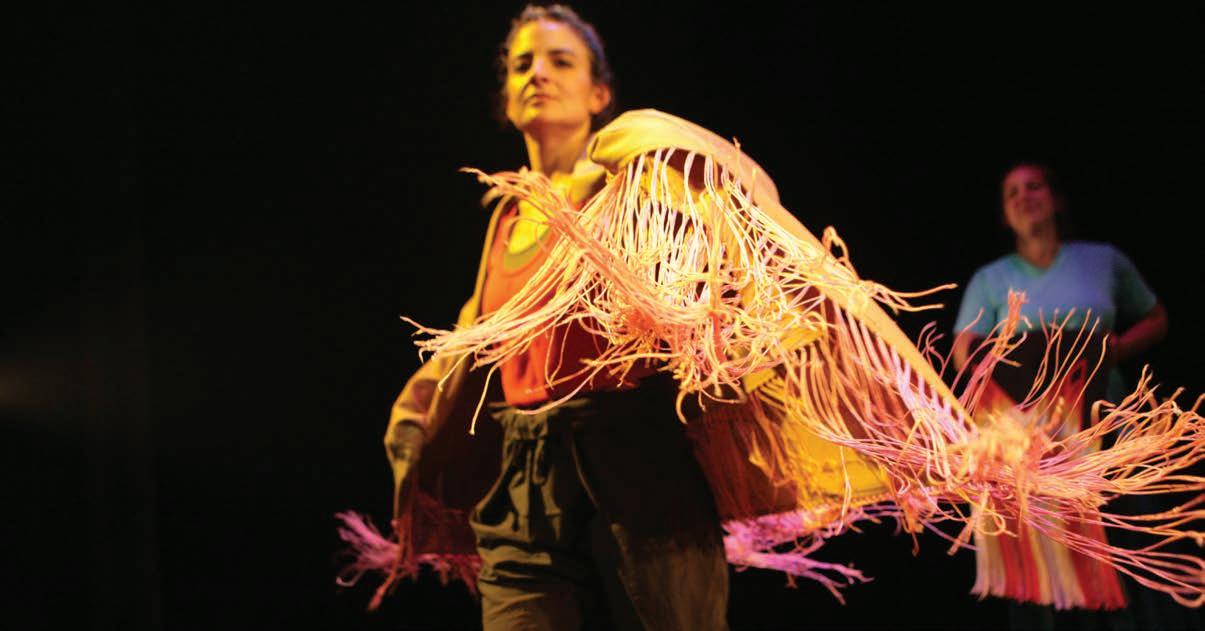
A WORLD WE HAVE LOST
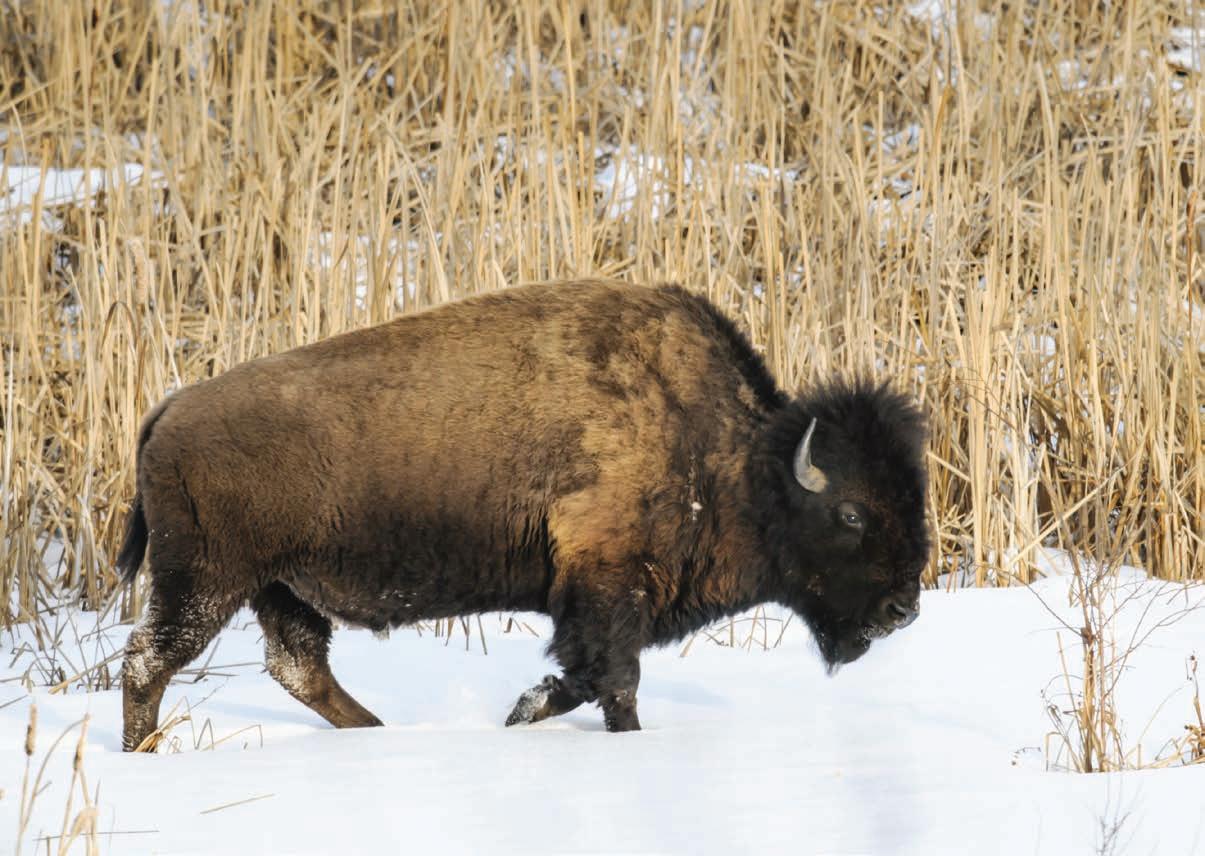
The following excerpt is from Dr. Bill Waiser’s A World We Have Lost: Saskatchewan before 1905 (Fifth House Publishers 2016), winner of the Governor General’s Literary Award for Non-Fiction. The book complements Dr. Waiser’s awardwinning centennial history of the province, Saskatchewan: A New History.
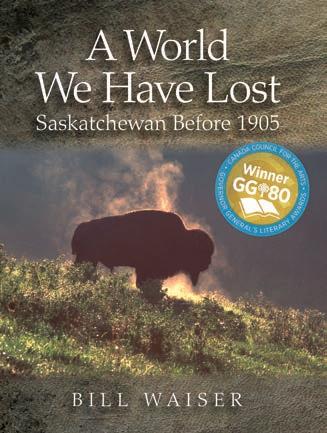
Chapter Twelve, “If Something is Not Done,” examines the reach of the Métis commercial bison hunt from Red River across the northern Great Plains into the future province of Saskatchewan in the mid-nineteenth century. This annual summer hunt often brought the Métis into conflict with the Sioux. Many Métis families also began living year-round in the interior, in places like Wood Mountain and the Cypress Hills, in order to have better access to the dwindling bison herds.
The bison hunt was the mainstay of the Red River settlement economy in the mid-nineteenth century. PROVINCIAL ARCHIVES OF SASKATCHEWAN S-MN-B 3118
The Métis were already well positioned to intensify the bison hunt. By the end of the third decade of the nineteenth century, these “movable armies,” as HBC Red River clerk Alexander Ross described them, were entering the plains in force. In 1840 alone, 620 men, 650 women, and 360 children left Pembina as part of a 1,200-cart caravan. This number of participants was not simply a reflection of the growing population at Red River but an indication of how many people were involved in the summer or dried meat hunt, including priests, who regularly held mass and performed other Roman Catholic rites on the trail. Ross, who tagged along with the Métis in 1840, provided one of the best accounts of the organization and operation of the hunt. At the rendezvous, the assembled hunters elected a president or chief and twelve councillors, usually senior, experienced men. They, in turn, decided the rules that were to be followed out on the open plains, particularly during the hunt. Captains were also chosen by ten hunters voluntarily lining up behind prospective leaders. Where these procedures came from is not known; they could be either Indian or French in origin.
Led by a guide carrying a flag on a staff, the cart caravan, sometimes several miles long, slowly worked its way southwest across the plains. Advance scouts searched for bison, as well as kept a careful watch for the Sioux. There is no record of any Métis camp being routed; never more than a few scouts were ever lost. Once a herd was located, camp was immediately set up nearby and everything readied. The chief led the hunters out to the herd, and it was only on his shout that they charged the startled bison. Each hunter guided his horse towards a particular animal, dropped the reins once close enough, and then fired across the saddle into the beast. He then rode after another animal and kept shooting and killing until any remaining bison were too scattered to pursue. The sounds of the slaughter saturated the air: the highpitched cries of the hunters, the rapid pounding of the hooves of the bison and horses, the constant blasts of gunfire, the whinnying of the horses with each kill and redirection, and the bleating of the bison and the heavy, throaty breathing of those dying on the blood-soaked plains. Dust rose and enveloped the scene, adding a surreal quality to the killing field. It filled the eyes, nostrils, and mouths of the hunters, mixed with the taste and smell of blood and shit.
The Métis were precision marksmen. But what made them so efficient during the hunt was their specially trained horses, known as buffalo runners. They had also perfected the reloading of their muzzle-loaders on the fly. With a few balls of shot in his mouth and his front coat pockets filled with powder and more shot, each hunter frantically poured a handful of powder down the barrel of the gun after it was discharged, spit in a ball, and then whacked the stock of the gun against his hip. The rapidity with which they were able to fire caused their gun barrels to overheat, sometimes with unfortunate consequences. Spills, bruises, and sprains were also quite common.
The dead bison were butchered on the spot. Working quickly because of the hot summer temperatures, the hunters and their families removed the skin, tongue, back fat or depouillé, meat, tendons, and any other serviceable body parts, before abandoning the carcass to the wolves, coyotes, and birds. Back at camp, the less glamorous but real work began. Women, sometimes with help from children, meticulously scraped the robes to ensure that any flesh was removed. Dressing and tanning the skin, to make it soft and marketable, took several days of painstaking labour. They also dried meat in long strips in the sun and either tied it up in bales or pounded and mixed it with fat to produce pemmican that was then poured into bison leather bags. At night, there was feasting, storytelling, and singing to the accompaniment of the fiddle.
After several successful hunts, the heavily loaded carts, each carrying the meat and robes of eight-to-ten bison, trundled back to Red River, usually in late summer, where the Métis sold or traded the products of the hunt and paid off their debts. Their absence meant they had less time to devote to their subsistence farms. But it did provide a dependable living, something that eluded those who suffered through repeated crop failures at Red River. The time spent together on the hunt on the open plains, moreover, instilled in the Red River Métis a strong sense of identity, of being a nation with its own distinctive culture and traditions. With this identity came a feeling of independence, that they were no longer beholden to the HBC but could decide what was in their best interests. This confidence as a separate people was further boosted by their successful skirmishes with the Sioux. They had come to see themselves as “masters of the plains wherever they might choose to march.”
BILL WAISER ’71
Alumnus Bill Waiser is a distinguished professor emeritus and former A.S. Morton Research Chair at the University of Saskatchewan. He has published over a dozen books, including Loyal till Death: Indians and the North-West Rebellion, with Blair Stonechild, a finalist for the 1997 Governor General’s literary award for non-fiction.










